The Corsair H80i GT and H100i GTX AIO Coolers Review
by E. Fylladitakis on November 16, 2015 8:00 AM EST- Posted in
- Cases/Cooling/PSUs
- Corsair
- Liquid Cooling
- Corsair Link
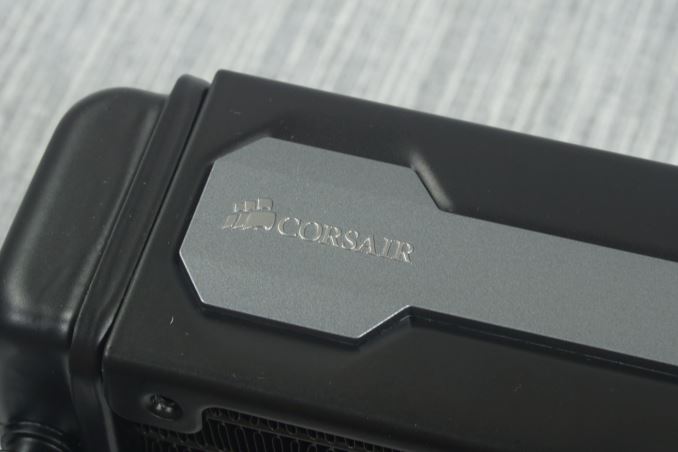
Corsair is a company that expanded furiously during the past decade, diversifying into several segments of the market. What once was a manufacturer of computer memory-related products today produces a great number of computer hardware and peripherals, from RAM modules and SSDs to cooling solutions and gaming peripherals.
Most of Corsair's users are probably unaware that one of the first attempts Corsair made to diversify was towards high performance cooling solutions. The company first entered the market of liquid cooling back in 2003 with the HydroCool 200. Even though the product also bear Delphi's logo, it was not terribly successful at the time due to its size, cost, and complexity. Corsair however did not give up and retried several years later with the release of the Hydro AIO series. The simplicity and relatively low cost made their liquid cooling solutions popular quickly.
Today, the AIO liquid coolers are amongst Corsair's most popular products. We had a look at several of their liquid coolers a year ago, in our mega roundup review of AIO coolers. In this review, we are going to have a look at their latest and most advanced 120 mm fan coolers, the H80i GT ($90) and the H100i GTX ($105). Both essentially are improved versions of the popular H80 and H100i respectively, featuring both aesthetic and performance upgrades.
Packaging & Bundle
Corsair supplies all of their advanced Hydro coolers in similarly sized and designed cardboard boxes. Essentially, the only thing that changes is the picture of the product and the color theme. The design is simple but elegant and attractive, with enough information printed on the box and in several languages. Inside the box, the coolers are well protected into a custom cardboard insert.
The bundle of both coolers is essentially identical, with the exception of the manual. Inside each box we found the necessary mounting hardware, an internal USB header cable and two identical fans. The fans are the SP120L PWM, fans designed for high static pressure and with a maximum rated speed of 2450RPM. There are no data regarding the fan's engine type but, assuming that they are based on the SP120 fans which Corsair retails, they should be using a hydraulic bearing as well.


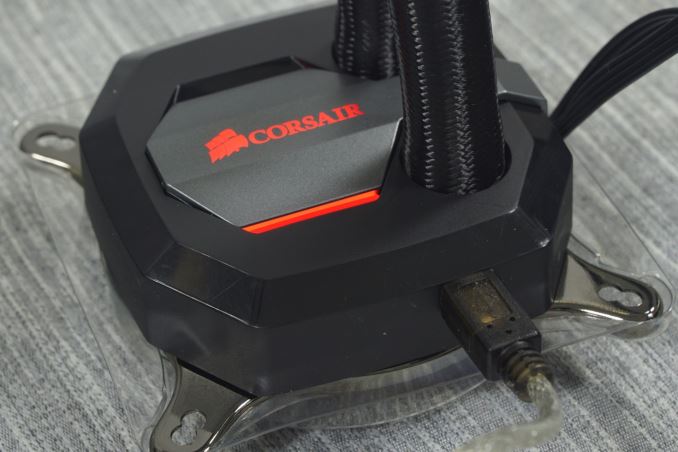
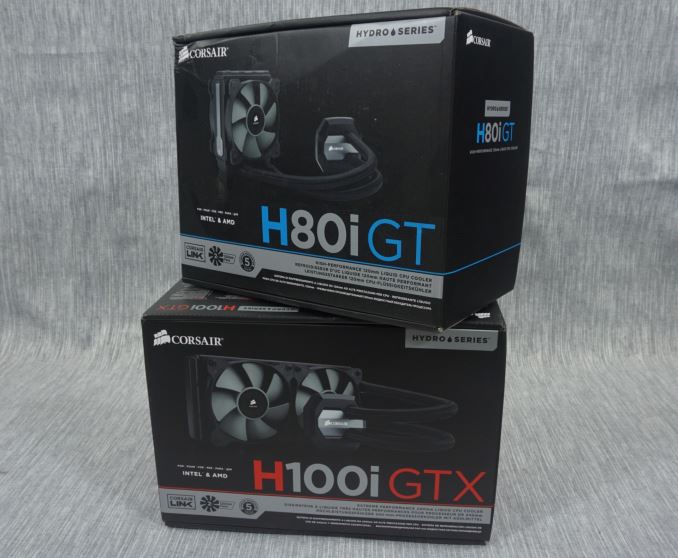
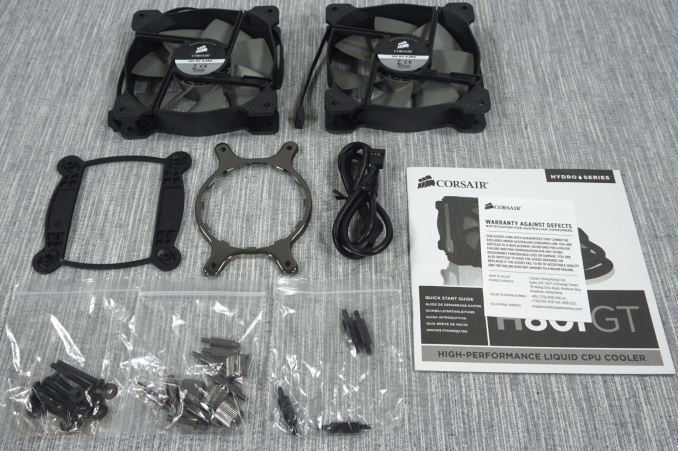
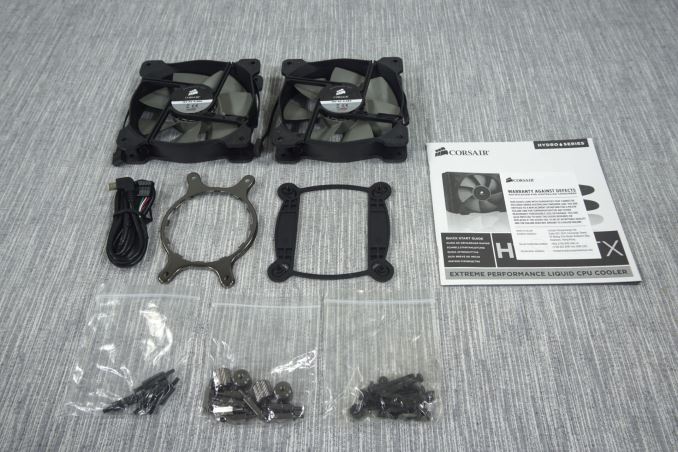








47 Comments
View All Comments
Beararam - Wednesday, November 18, 2015 - link
Oh, I never doubted your honesty about the numbers you're getting from realtemp, or aida, or whatever. It doesn't matter what they tell you though; if you're getting below ambient on an AIO or air cooler... it's wrong, because the medium you are cooling with is the air in that room.weewoo87 - Thursday, September 15, 2016 - link
Is your PC on the floor next to your AC vent? The air coming out of your AC vent will be cooler than ambient.xthetenth - Monday, November 16, 2015 - link
Good review, but I'd really like to see two things. First if you could pick a good noise level for use without headphones and normalize to that if possible for the product so we could see what lowering some of the more aggressively tuned coolers to a level that's bearable to listen to. Second, I'd love to see whether or not the coolers can be set to an inaudible or at least very quiet idle setting, and if so how much heat they can dissipate effectively in that setting.Adding those and mixing in some air coolers (probably one or two of the high end kilo of metal hanging off your socket coolers, and a stock cooler and 212 as a baseline) would make the reviews fantastic and a source for all the information I'd want when looking at coolers.
rhysiam - Monday, November 16, 2015 - link
+1 for the first request... pick a nice acceptable target level in dBA and a fairly average OC'd CPU thermal load and see what temps the coolers can manage. The chart topping temps for these coolers are completely irrelevant for the overwhelming majority of users because of the noise levels. I suspect most coolers would produce impressive temps if they have a jet engine pushing air through them.I realise it's not a perfect comparison, dBA is not a perfect measure of how intrusive the noise levels are, and no doubt people would quibble over whatever dBA and wattage you decided on. BUT, sometimes you just want a quick chart that gives a reasonably accurate reflection of performance under relatively "normal" enthusiast workloads, and temps over ambient at a fixed dBA & wattage would give you that.
To the author - I really appreciate your scientific approach. Thanks for the article and I look forward to seeing the comparison with the high Noctua's in future too.
thekdub - Monday, November 16, 2015 - link
Is 1400RPM the lowest these coolers will get using the Corsair Link software? My H100i idles at ~900RPM using a Swiftech PWM hub and is not only inaudible from ~2-2.5 feet away, but also maintains sub-30*C idle temps in a 23*C room with a 4970k. Even at load, the cooler is inaudible (or at least not noticeable) while wearing a pair of open-back headphones.If these new coolers are indeed quieter than the preceding H100i/H80i, then "quiet but tolerable" seems like it is selling them short. You can make these things silent with a custom fan curve and still achieve adequate cooling.
As a side note, I do think the older H100i/H80i have a much more sleek and attractive appearance. The two-tone grey/black on these new ones looks plasticky and cheap.
nmm - Monday, November 16, 2015 - link
Such a pity the H110i GTX wasn't in the mix, while you were at it. That really seems like the one worth looking at for anyone who has room for it. Let's face it, if you are in the market for this much cooling, you're probably in the market for as much as you can get for the least noise, which is the H110i GTX.Still, after seeing the figures and description of the H100i GTX pump noise I'm more comfortable sticking with big air for my next build.
Awful - Monday, November 16, 2015 - link
Still using my original H100 on i2500K @ 4.8GHz. Still see no good reason to upgrade either. Nice!lorribot - Monday, November 16, 2015 - link
There are a couple of real world tests that seems to be missing but may actually be quite useful, firstly cooling performance at a given noise level say 35/40/45db rather than at a given voltage or or how noisy is a system to maintain a 200w load at a say a temperature of 80C.mobutu - Tuesday, November 17, 2015 - link
www.silentpcreview.com constant ambient conditions during their testing are 10~11 dBA and 21~23°C.Anything above 20 dBA is rightfully considered loud.
You need to learn your lesson and stop bullshitting with the following laughable arguments, cause you clearly don't know what inaudible and loud really means:
- "The noise floor of our recording equipment is 30.2-30.4 dB(A), which represents a medium-sized room without any active noise sources.";
- "<35dB(A) = Virtually inaudible";
- "35-38dB(A) = Very quiet";
- "38-40dB(A) = Quiet".
HollyDOL - Tuesday, November 17, 2015 - link
Please review your lessons of physics or at least use google before you start accusations, one of many: http://www.cdc.gov/ncbddd/hearingloss/sound.html